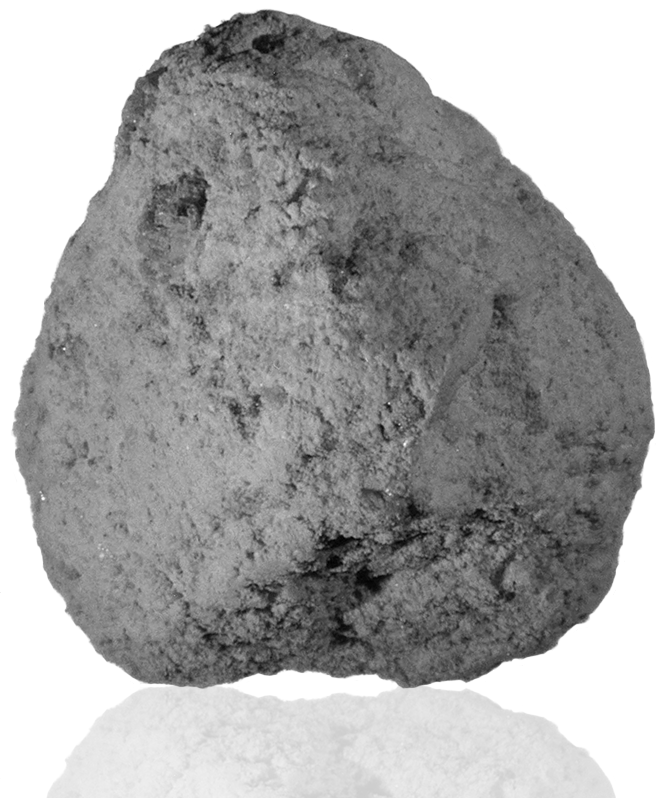
Fact sheet
67415 is a noritic anorthosite with a poikilitic texture. It is composed predominantly of angular grains of plagioclase with lesser amounts of mafic minerals (mostly orthopyoxene), granoblastic lithic fragments, minor metallic iron (some rust), troilite, ilmenite and very rare symplectite. 67415 is a lightly-shocked, granulitic breccia with a cataclastic matrix. It is extremely friable and has disintegrated into a fine powder and a few large chunks. Mineral proportions in relict lithic fragments are variable, but all have 70-90% plagioclase. Rotations 1 & 2 show angular clasts of plagioclase feldspar and olivine respectively.
The sample weighed 175 grams before analysis and has been dated at 3.96±0.04 billion years (Ar/Ar).
Further details of this and other Apollo samples are here: http://curator.jsc.nasa.gov/lunar/
The Apollo 16 landing site was in the hilly region around Descartes crater in the lunar highlands. The landing spot was chosen to allow the astronauts to gather geologically older lunar material (Descartes Formation and the Cayley Formation) than the samples obtained in the first four landings, which were in or near lunar maria.
The mission lasted 11.1 days, with a stay on the lunar surface of 71 hours. The crew were on the lunar surface for 20.2 hours during which they traversed approximately 27 kilometers and collected approximately 96 kilograms of samples.
Apollo 16 was launched on 16 April 1972.






